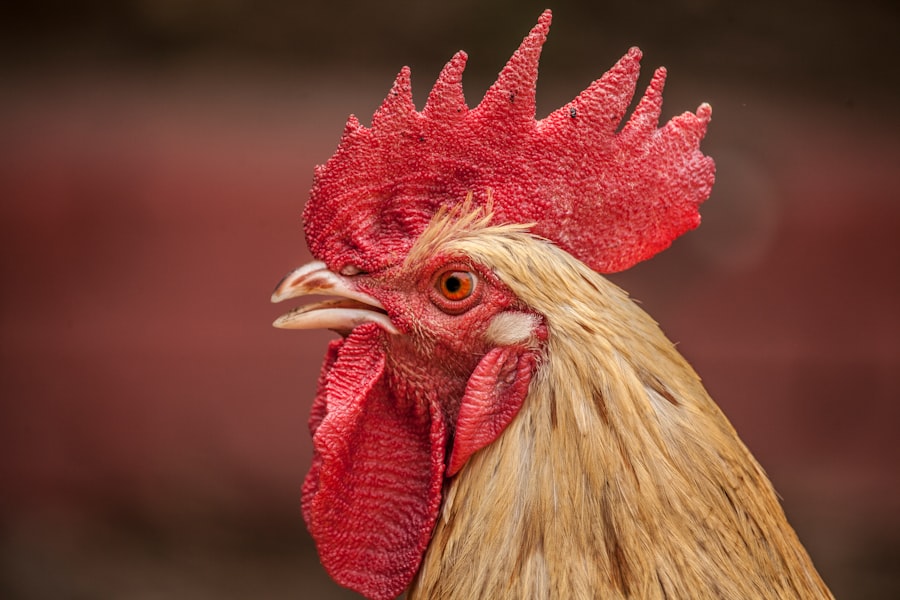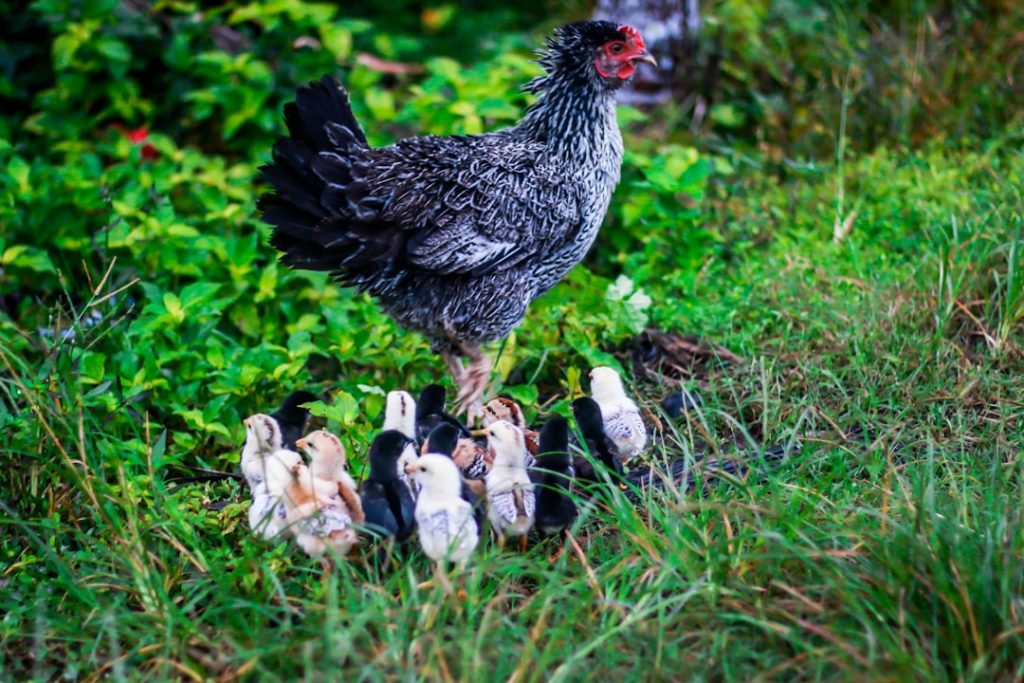Chickens are naturally curious and opportunistic creatures, often drawn to any source of food within their vicinity. When it comes to creep feeders, chickens may exhibit various behaviors depending on their age, breed, and environmental factors. Young chicks, for example, may be more hesitant to approach a creep feeder compared to older, more confident birds.
Additionally, certain breeds of chickens may be more assertive in their attempts to access the feed, while others may be more passive. Understanding the behavior of chickens around creep feeders is crucial in developing effective strategies to prevent unwanted access. Observing the flock’s behavior patterns, such as the times of day they are most active or the specific areas they tend to congregate, can provide valuable insights into their feeding habits.
By understanding how chickens interact with creep feeders, farmers can better anticipate potential challenges and implement targeted solutions to mitigate chicken interference. Furthermore, considering environmental factors such as weather conditions, predator presence, and the availability of alternative food sources can also influence chicken behavior around creep feeders. For instance, chickens may be more inclined to seek out supplemental feed during periods of inclement weather or when natural forage is scarce.
By taking these factors into account, farmers can adapt their feeding strategies to better accommodate the needs and behaviors of their flock.
Table of Contents
- 1 Implementing physical barriers to prevent chicken access
- 2 Utilizing deterrents to discourage chicken presence
- 3 Creating designated feeding areas for chickens
- 4 Establishing a consistent feeding schedule to minimize chicken interference
- 5 Monitoring and adjusting feeding methods as needed
- 6 Seeking professional advice for persistent chicken intrusion issues
- 7 FAQs
Key Takeaways
- Chickens are naturally curious and will investigate new objects, such as creep feeders, in their environment.
- Physical barriers, such as fencing or netting, can be effective in preventing chickens from accessing the creep feeder.
- Deterrents like motion-activated sprinklers or noise-making devices can discourage chickens from approaching the feeder.
- Designating specific feeding areas for chickens can help minimize their interference with the creep feeder.
- Establishing a consistent feeding schedule can help train chickens to feed at specific times and reduce their presence around the feeder.
- Regular monitoring of chicken behavior and adjusting feeding methods as needed can help maintain control over their access to the feeder.
- Seeking professional advice, such as consulting with a poultry specialist, can be beneficial for addressing persistent chicken intrusion issues.
Implementing physical barriers to prevent chicken access
Types of Physical Barriers
One effective method for preventing chicken access to creep feeders is the implementation of physical barriers. These barriers can take various forms, such as elevated platforms, wire mesh enclosures, or specially designed feeders with access restrictions. Elevated platforms can deter chickens from reaching the feed by raising it to a height that is inaccessible to them, while wire mesh enclosures can create a physical barrier that prevents chickens from directly accessing the feed.
Designing Feeders with Access Restrictions
Specially designed feeders with access restrictions, such as narrow openings or adjustable baffles, can also limit chicken access while still allowing smaller animals, such as piglets or lambs, to reach the feed. These physical barriers are particularly effective in situations where chickens are the primary source of interference, as they directly address the issue of unwanted access without significantly impacting other animals’ feeding behaviors.
Strategic Placement of Creep Feeders
In addition to physical barriers, strategic placement of creep feeders can also help prevent chicken access. Placing feeders in areas that are less accessible to chickens, such as enclosed pens or covered shelters, can further discourage their presence. By combining physical barriers with thoughtful placement, farmers can create an environment that minimizes the likelihood of chicken interference with creep feeders.
Utilizing deterrents to discourage chicken presence

In addition to physical barriers, farmers can also utilize deterrents to discourage chicken presence around creep feeders. Deterrents can take various forms, such as visual or auditory stimuli, unpleasant tastes or smells, and even natural predators. Visual deterrents, such as scarecrows or reflective tape, can startle chickens and dissuade them from approaching the feeder.
Similarly, auditory deterrents, such as ultrasonic devices or noise-emitting devices, can disrupt chickens’ comfort and discourage them from lingering near the feeder. Unpleasant tastes or smells can also be effective deterrents for chickens. Spraying the area around the feeder with bitter or spicy substances can make it less appealing to chickens, reducing their likelihood of attempting to access the feed.
Additionally, introducing natural predators, such as dogs or raptors, into the vicinity of the feeder can create a sense of danger for chickens, prompting them to avoid the area altogether. By utilizing a combination of deterrents, farmers can create an environment that is less inviting to chickens, reducing their interference with creep feeders. It is important to note that while deterrents can be effective in discouraging chicken presence, they should be used in a manner that does not cause undue stress or harm to the animals.
Creating designated feeding areas for chickens
To minimize interference with creep feeders, farmers can create designated feeding areas specifically for chickens. By providing a separate feeding space tailored to the needs and behaviors of chickens, farmers can reduce competition and potential conflicts with other animals accessing the creep feeder. This designated feeding area can be equipped with its own feeders and water sources, as well as appropriate shelter and protection from predators.
Furthermore, creating designated feeding areas for chickens allows farmers to better monitor their feeding behaviors and adjust their feeding strategies accordingly. For example, observing the flock’s feeding patterns and preferences within the designated area can inform decisions about the type and placement of feeders and the frequency of feed replenishment. By providing a dedicated space for chickens to feed, farmers can promote a more harmonious feeding environment that minimizes interference with creep feeders.
In addition to designated feeding areas, farmers can also consider implementing rotational grazing or feeding schedules that allow chickens access to specific areas at designated times. This approach not only reduces competition for feed but also promotes more efficient use of resources and encourages natural foraging behaviors in chickens.
Establishing a consistent feeding schedule to minimize chicken interference
Establishing a consistent feeding schedule is essential in minimizing chicken interference with creep feeders. By providing regular and predictable access to feed, farmers can help reduce competition and potential conflicts among animals vying for access to the feeder. A consistent feeding schedule also allows farmers to better monitor and manage their flock’s feeding behaviors and adjust their feeding strategies as needed.
Furthermore, a consistent feeding schedule can help promote healthier eating habits in chickens by preventing overconsumption or undernourishment. By providing regular access to feed at set intervals throughout the day, farmers can ensure that their flock receives adequate nutrition without excessive reliance on supplemental feed from creep feeders. In addition to promoting healthy eating habits, a consistent feeding schedule can also help reduce stress and anxiety in chickens by providing them with a sense of routine and predictability.
This can contribute to overall flock welfare and reduce the likelihood of disruptive behaviors around creep feeders.
Monitoring and adjusting feeding methods as needed

Identifying Issues and Opportunities
By closely monitoring their flock’s behavior patterns, farmers can identify any issues or disruptions related to accessing the feeder and make informed adjustments to their feeding methods accordingly.
Strategies for Improvement
For example, if certain chickens are exhibiting aggressive behavior or monopolizing access to the feeder, farmers may need to consider implementing strategies such as separate feeding areas or rotational grazing to promote more equitable access to feed. Similarly, if environmental factors such as predator presence or inclement weather are impacting chicken behavior around creep feeders, adjustments may need to be made to address these concerns.
Maintenance and Upkeep
Furthermore, farmers should regularly assess the condition and functionality of creep feeders to ensure they are effectively dispensing feed and minimizing waste. Proper maintenance and upkeep of feeders can help prevent potential issues that may contribute to chicken interference.
Seeking professional advice for persistent chicken intrusion issues
In cases where persistent chicken intrusion issues arise despite implementing various strategies, seeking professional advice may be necessary. Consulting with experienced poultry specialists or animal behaviorists can provide valuable insights and recommendations for addressing specific challenges related to chicken interference with creep feeders. Professional advice may involve conducting a thorough assessment of the farm’s layout and management practices to identify potential areas for improvement.
Additionally, experts may offer guidance on implementing advanced techniques or specialized equipment designed to deter chicken presence around creep feeders effectively. Moreover, professional advice can also help farmers develop long-term strategies for managing chicken interference with creep feeders while promoting overall flock welfare and productivity. By leveraging the expertise of professionals in the field, farmers can gain valuable knowledge and support in addressing persistent challenges related to chicken behavior around creep feeders.
In conclusion, understanding and managing chicken behavior around creep feeders requires a multifaceted approach that considers various factors such as environmental conditions, feeding schedules, and the use of physical barriers and deterrents. By implementing targeted strategies tailored to the specific needs and behaviors of chickens, farmers can minimize interference with creep feeders while promoting a harmonious feeding environment for their entire flock. Additionally, seeking professional advice when faced with persistent challenges can provide valuable guidance and support in developing effective long-term solutions for managing chicken intrusion issues.
If you’re looking for more tips on keeping chickens out of feeders, you might be interested in an article on choosing the right flooring for your chicken coop. This article discusses the importance of selecting the right flooring material to prevent pests and keep your coop clean and hygienic. It’s a great resource for anyone looking to improve their chicken coop setup.
FAQs
What is a creep feeder?
A creep feeder is a specialized feeding area designed to allow smaller animals, such as young chicks or piglets, to access feed while preventing larger animals, such as adult chickens or pigs, from entering.
Why do chickens need to be kept out of creep feeders?
Chickens need to be kept out of creep feeders because they can consume large amounts of feed intended for smaller animals, leading to waste and potential health issues for the smaller animals.
How can chickens be kept out of creep feeders?
There are several methods to keep chickens out of creep feeders, including using physical barriers such as adjustable gates or panels, utilizing specialized feeders with smaller access points, and providing separate feeding areas for chickens and smaller animals.
What are the benefits of keeping chickens out of creep feeders?
By keeping chickens out of creep feeders, you can ensure that the intended animals, such as young chicks or piglets, have access to the appropriate feed without competition from larger animals. This can help promote healthy growth and reduce feed waste.
Are there any potential drawbacks to keeping chickens out of creep feeders?
One potential drawback of keeping chickens out of creep feeders is the need for additional management and monitoring to ensure that the smaller animals have access to feed while preventing larger animals from entering. Additionally, implementing physical barriers or separate feeding areas may require additional resources and infrastructure.
Meet Walter, the feathered-friend fanatic of Florida! Nestled in the sunshine state, Walter struts through life with his feathered companions, clucking his way to happiness. With a coop that’s fancier than a five-star hotel, he’s the Don Juan of the chicken world. When he’s not teaching his hens to do the cha-cha, you’ll find him in a heated debate with his prized rooster, Sir Clucks-a-Lot. Walter’s poultry passion is no yolk; he’s the sunny-side-up guy you never knew you needed in your flock of friends!







